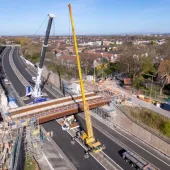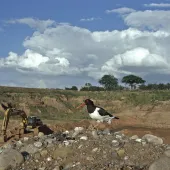M27 resurfacing work to start
M27 low-noise concrete resurfacing work is to start this year (February) between junctions 5 and 7.
The project will provide a low-noise surface along the M27 between junctions 5 and 7, reducing noise for nearby communities, ensuring a smoother ride for drivers, and extending the life of the concrete road, which will be protected by a new asphalt overlay.
Residents living nearby have campaigned for years for the work to go ahead describing the road as 'unbelievably noisy'. The project was delayed due to costs rising from £50 to £80 million in February 2023.
In a letter to residents, National Highway said preparatory works will start in a few weeks, saying: “The scheme will overlay the existing concrete surface with a lower-noise asphalt, which will reduce noise pollution for those residents living closest to the M27 and provide a smoother surface for drivers.
Preparatory work will see temporary CCTV cameras installed on February 5, after which concrete repairs will be carried out and ground surveys completed before a contraflow traffic system is installed overnight.
“Our current programme shows the majority of on-site work will be completed by Spring 2026,” said a National Highways statement, “and during this period there will be continuous activity while we work as quickly and as safely as possible to complete the necessary requirements.
The original Environmental Assessment Report (EAR) produced for the M27 Junctions 4 to 11 Smart Motorway (SM) project, assumed that during the construction of the proposed scheme, the existing hard shoulder and running lanes between Junctions 5 and 7 would be resurfaced with a new Low Noise Road Surface (LNRS), replacing the existing concrete surface. Consequently, all running lanes would be new LNRS between Junctions 5 and 7.
Since the production of the EAR, National Highways undertook an additional investigation of the concrete pavement and, due to potential voids under the concrete pavement, decided it would require treatment with an overlay was incorrect. The testing and investigations have demonstrated that the existing concrete is structurally sound and suitable for upgrade to an SM.
As a consequence of not needing to treat the concrete, there is no need to resurface and the existing concrete surface between Junctions 5 and 7 will be retained. This noise addendum has therefore been undertaken to ensure the conclusion reached within the EAR is still valid







